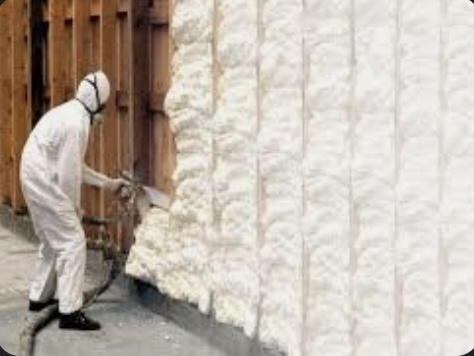How Open Cell and Closed Cell Spray Foam Insulations Differ

Many builders and homeowners choose spray foam insulation because of its many benefits, including increased thermal performance, livability, and durability. Some spray foam insulation is better than others, though. Typically, spray foam insulation is either open cell or closed cell. Depending on the task at hand and the required efficiency, each variety has specific benefits and drawbacks.
Open Cell Spray Foam Insulation
Open cell spray foam insulation is made up of bubbles that pop during application, allowing air to fill the voids. As a result, open cell spray foam has a malleable texture and can grow to as much as 100 times its initial size. The density of open cell spray foam is lower than that of closed cell spray foam, typically falling between 0.4 and 0.6 pounds per cubic foot.
Benefits:
- It helps to improve indoor air quality by forming an efficient air barrier and decreasing air leakage.
- Through its ability to dampen sound and vibrations, it serves as a useful noise buffer.
- Without cracking or losing effectiveness, it can withstand seasonal and permanent shifts in a home’s location.
- It’s more cost-effective than closed cell spray foam because less time and resources are needed for installation.
Drawbacks:
- In comparison to closed cell spray foam, its R-value is between 3.5 and 3.9 per inch, making it less effective at retaining heat. The R-value of a material indicates how well it blocks the transfer of heat.
- In other words, it can soak up water and let vapor pass through it because it doesn’t act as a vapor or moisture barrier. Problems like mold growth, wood rot, and even structural damage can result if this isn’t fixed.
- It cannot be left exposed because it is susceptible to fire, UV rays, pests, rodents, or insects. It requires an additional layer of protection, such as drywall or plywood.
Closed Cell Spray Foam Insulation
Bubbles in closed cell spray foam insulation are compacted tightly during installation to prevent air from escaping. Because of this, closed cell spray foam has a dense, rigid texture and can expand to a depth of 30–50mm. Usually weighing in at 1.5 to 2 pounds per cubic foot, closed cell spray foam is denser than its open cell counterpart.
Benefits:
- It has a higher R-value per inch than open cell spray foam, typically between 6 and 7. As a result, its thermal resistance can be increased while its thickness is decreased.
- It acts as a shield against air and water, warding off potential issues with condensation and water damage.
- By bonding firmly to the substrate, it improves the building’s strength and stability.
- Its superior resistance to heat, flame, ultraviolet light, insects, rodents, and other pests makes it suitable for use in situations where open cell spray foam would be inadequate.
Drawbacks:
- Due to the higher cost of materials and labor, it is more expensive to install than open cell spray foam.
- Comparatively, open cell spray foam offers superior soundproofing to this product.
- The constant expansion and contraction of the surrounding temperature may lead to shrinkage and cracking.
How to Choose Between Open Cell Spray Foam Insulation and Closed Cell Spray Foam Insulation?
The decision between open cell spray foam insulation and closed cell spray foam insulation is influenced by a number of factors, including:
- Exactly what climate region you are located in
- The property or structure you have
- Which location you want the insulation in your building
- Your project’s performance objectives
Generally speaking, open cell spray insulation is better suited for interior applications where soundproofing, air sealing, and cost-effectiveness are important, such as walls, floors, ceilings, and attics.
For more information, visit




























